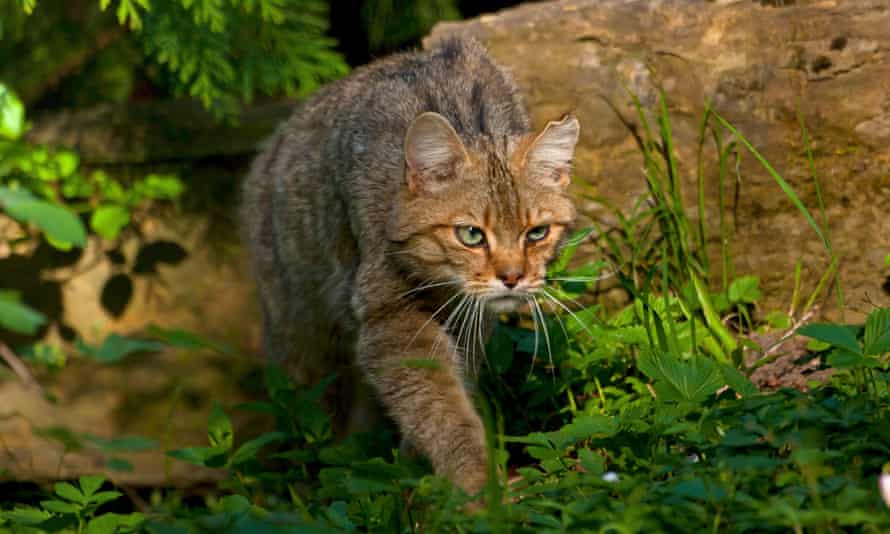Wildcats return to Netherlands after centuries’ absence
Rewilding of forests and ‘saturated’ habitats in Germany and Belgium behind growing population

They disappeared centuries ago, but wildcats have returned to the forests of the southern Netherlands, local conservationists have said.
The wildcat, which has longer legs and a flatter head than its domestic cousin, disappeared from modern-day Dutch territories in the middle ages as a result of hunting and forest clearance. The return of the animal, with its distinctive round-tipped and black-ringed tail, is a sign of the rewilding of forests in the southern Dutch region of Limburg, according to Hettie Meertens, a biologist who works for the ARK conservation group.
The number of wildcats has been increasing in southern Limburg since 2013, she said, as they have moved from “saturated” habitats in the neighbouring Eifel mountains of Germany and the Belgian Ardennes to look for new territories.
“The population is small but it is increasing. The situation is fragile, but we are confident in the expansion,” Meertens said, referring both to numbers and and the cats extending their territory to other parts of the Netherlands.
ARK plans to count the number of wildcats next year, a laborious task involving cameras positioned on trees. Meertens puts valerian oil, a scent which attracts the cats, on branches to encourage them to linger under the camera lens.
The cats’ return to the Netherlands results from changing forest management that favours nature over wood harvesting. Wilder forests offer the fallen trees and hollow spaces in which they like to rest. Conservationists have also been encouraging farmers to plant “cat-kind” hedges in their fields to provide habitat for the voles that the cats prey on.
Pine martens, a weasel-like mammal, have also returned to the region’s forests since 2015.
“The ecosystem is complete with the carnivores. They represent the wild forest and that is very important,” Meertens said.